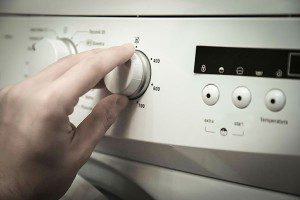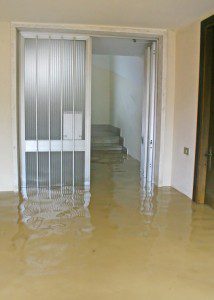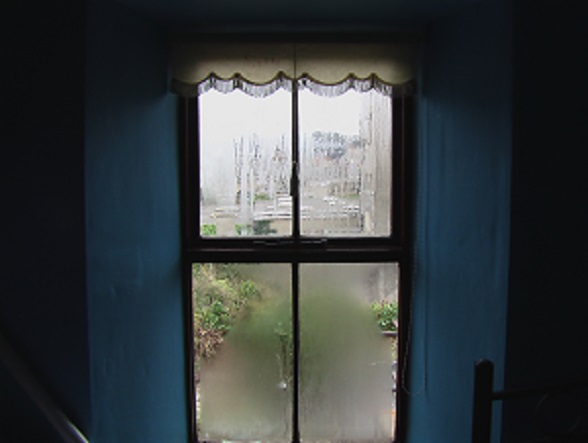Tips to Handle Flooding in Your Commercial Kitchen
Most regions of the world experience heavy rain at some point, so building owners have to look for ways to keep the water from getting in. There’s nothing worse than water going inside your commercial building and damaging anything it contacts. Out of the many building areas, you have to protect your kitchen.
Commercial kitchens are where you cook food for the building tenants and you have to keep it operating, especially when you run a hotel or restaurant. Fortunately, the following tips can help you handle floodingFlooding is the overflow or accumulation of water in areas t... More in your kitchen.
Tip #1: Turn Off the Fuse Box Right Away
When floodingFlooding is the overflow or accumulation of water in areas t... More starts in your commercial kitchen, turn off the fuse box as quickly as possible. If you notice the water rising rapidly, it may contact electrical appliances. Water conducts electricity so you have to keep people from walking around to prevent electrocution.
This is the reason many owners design their commercial kitchens with sockets and plugs installed higher than usual to prevent them from touching the water when it floods. Once the floodingFlooding is the overflow or accumulation of water in areas t... More resides, do not turn on the fuse box or use the sockets. You have to contact an electrician and have them inspected for any water damage.

When it’s floodingFlooding is the overflow or accumulation of water in areas t... More, remove any cooking device or equipment that uses electricity
Tip #2: Cover or Remove Appliances and Other Electrical Equipment
When it’s floodingFlooding is the overflow or accumulation of water in areas t... More, the kitchen staff needs to cover or remove any cooking device or equipment that uses electricity from the kitchen as quickly as possible. If you expect a flood to hit your area, you need to stay prepared and remove any electrical cooking equipment earlier to ensure the flood won’t damage them. It also lessens the expenses you have to pay for all the damage the floodingFlooding is the overflow or accumulation of water in areas t... More has caused, which you can use to repairRepair is the act of fixing or restoring damaged property, m... More or improve other kitchen areas.
Tip #3: Use Protective Equipment When Clearing the Flood
If you don’t have time to contact professional cleaning services, the kitchen staff and your building’s cleaning personnel can clear the water using mops and buckets. But before you let them clear the flood inside the kitchen, you must make sure they wear protective equipment, such as boots and gloves, because the water may be contaminated.
You’ll never know where the water came from, so it’s only necessary to stay safe while removing the water out of the kitchen. The floodingFlooding is the overflow or accumulation of water in areas t... More may have come out of the plumbing pipes and contain all kinds of harmful bacteria. You don’t want your employees getting sick, so warn them about wearing proper cleaning attire. In most cases, it is best to call a water damage restoration professional to deal with the floodingFlooding is the overflow or accumulation of water in areas t... More.
Tip #4: Block the Source of the Water Leak
Even after hours of removing the water inside the kitchen, you still see that the water isn’t going down. You may not have noticed one spot where there’s gushing water, which is what’s causing the flood to keep rising. You may need to look for a contractor, especially if the hole needs cement or a specific sealant to block the water flow.
If your contractor can’t arrive on time, you can always use a rug to cover it temporarily while you wait for the contractors. It cannot completely cover the hole, but it can slow water flow into the kitchen. And once the contractors arrive, they can remove the rug and plug the hole correctly, putting an end to the floodingFlooding is the overflow or accumulation of water in areas t... More problem.
Tip #5: Inspect the Property Before and After
The best way to prevent floods from happening to your kitchen is by hiring a building inspector to evaluate the building’s structural integrity. You may not know that the kitchen has severe damage that needs fixing as soon as possible. Tiny cracks or gaps in walls, ceilings, or floors can cause water to get inside the kitchen, causing severe and expensive damage.
But if you did not expect your kitchen to get flooded, you also have to hire an inspector to determine where the water came in during the heavy rain. The water may have come from the drainage pipes due to flooded sewers or the tiny openings in windows. Many spots within the kitchen can cause floodingFlooding is the overflow or accumulation of water in areas t... More, so you need to hire building inspectionInspection is the careful examination and assessment of a pr... More services right away.
Tip #6: Construct Barriers for Future FloodingFlooding is the overflow or accumulation of water in areas t... More
In some cases, it’s impossible to prevent the rainwater from getting into your kitchen. Moving to a new business establishment will cost a ton of money, and you don’t have the available funds to do that yet. The only recourse left is to make flood barriers to prevent the water from getting inside your kitchen.
Before a severe storm passes by your area, you can place large sandbags in your building’s entrance. Make sure you put dozens of them and fill the small cracks and gaps with more sand. You can also set up thick plywood behind the sandbags to add more durability and prevent the floodwater from toppling the sandbags.
Besides the building entrance, you also have to cover the back exits and other openings that can potentially flood. If you have more time, use a thick cloth to cover the windows or shut them completely. You have to look for potential spots that the flood water can use to enter the kitchen.
Tip #7: Photograph Kitchen Damage
Not everyone has the time to take pictures of the damage because they’re too busy getting rid of the floodwater. You must take photos of the damaged parts of the kitchen because you’ll need them to show the insurance company if you want to decrease your expenses significantly.
Make sure you use a phone to produce high-quality photos and try to get the picture using angles where the insurers can see how the damage happened. It’s essential to take good pictures of where the damage occurred within the kitchen if you want your insurance company to help you financially.
Tip #8: Look Out for Hiding Water
After you’ve cleared out the floodwater within the kitchen, are you confident that there’s no water anywhere? Your kitchen may have hidden spaces that still have stagnant water. You have to check every nook and cranny of your kitchen because leaving water behind can cause many issues.
One issue is that insects like mosquitoes can use it as a breeding ground to reproduce and contaminate the food. You also have to think about the space behind the walls if it has water. Don’t forget to inspect the kitchen ducts for stagnant water as well. Instead of tearing up the ducts, you can install grease duct access panels to gain easy entry and clean it out.
Tip #9: Look for Salvageable Kitchen Equipment
Floods can become a nightmare for any kitchen owner because of the significant loss they have to regain if they want to resume operations. In some cases, owners think they need to throw away everything inside the kitchen because it got damaged by the water. They don’t know that they can still salvage some equipment, helping them save a bit of money. A water damage restoration professional can help salvage equipment that was damaged by flood water.
Make sure to remember the nine tips mentioned above if you want to handle a floodingFlooding is the overflow or accumulation of water in areas t... More situation inside your commercial kitchen properly.













